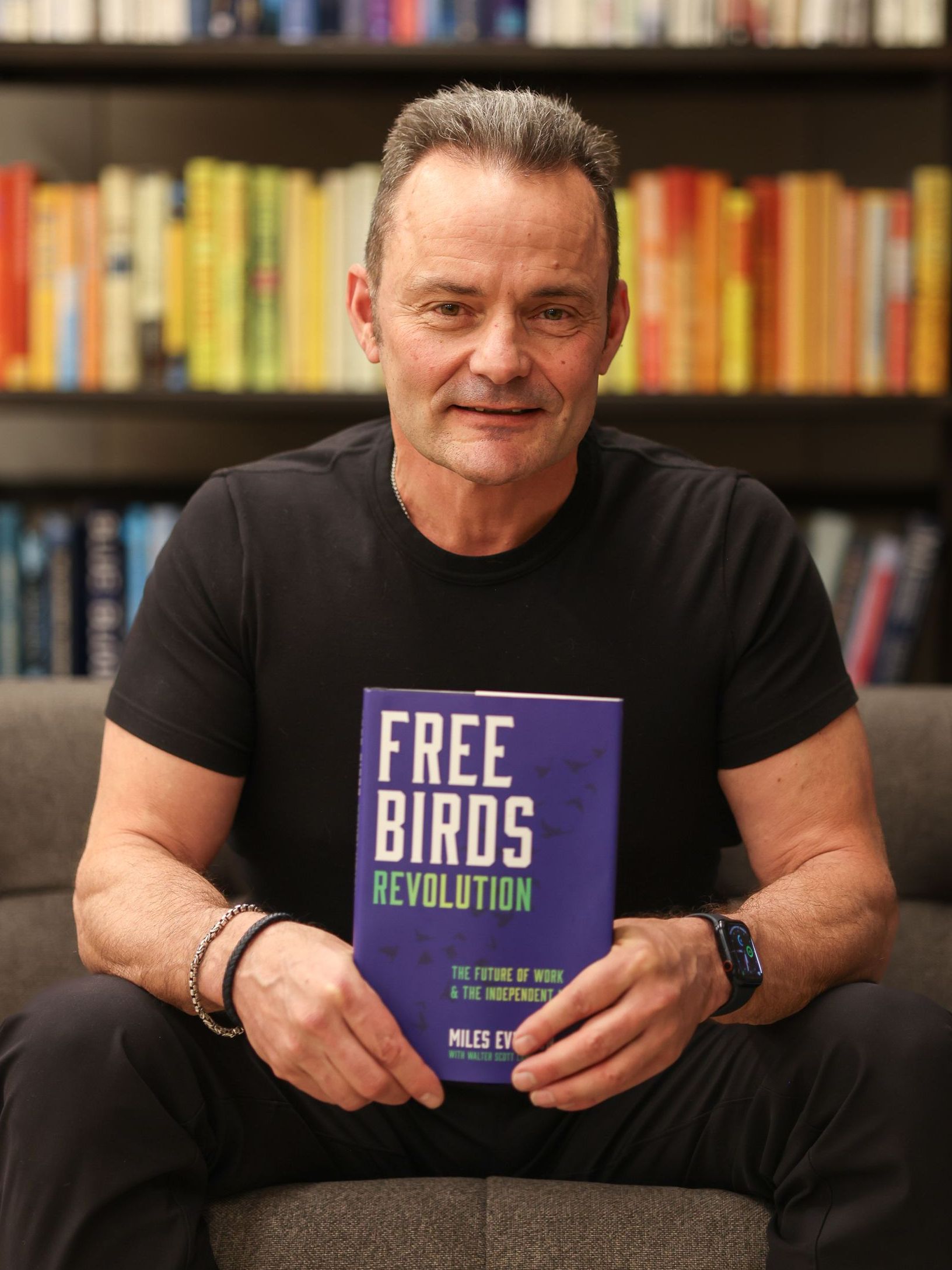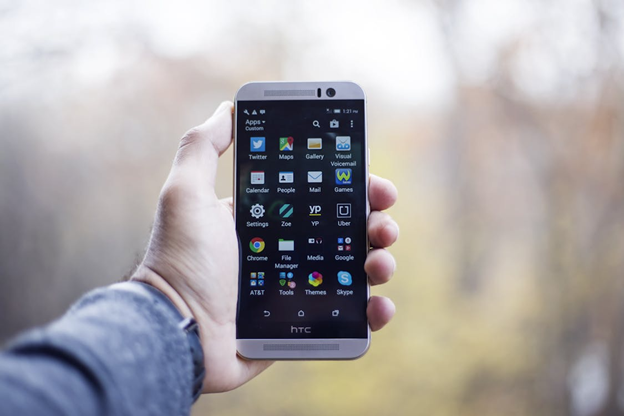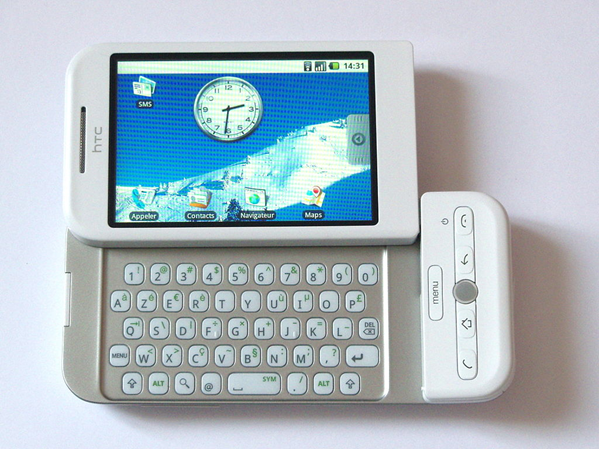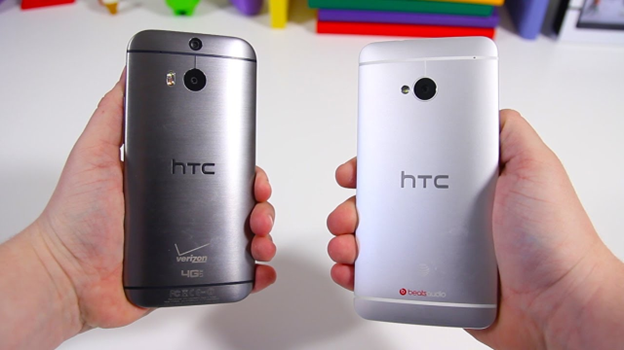This smartphone maker was once famous during Android’s early days. Here’s why it’s largely forgotten now.
| From the desk of Miles Everson: Hello! I’m thrilled to share another business insight with you in today’s “Return Driven Strategy (RDS).” For those of you who are not yet familiar with it, RDS is a pyramid-shaped framework with 11 tenets and 3 foundations. When applied properly, these principles help businesses reach high levels of performance. Today, we’re going to talk about a company that developed a cult following and trailed only Apple and Samsung during the early days of the smartphone wars. Continue reading below to learn why this smartphone maker remains largely irrelevant today. |
This smartphone maker was once famous during Android’s early days. Here’s why it’s largely forgotten now. During the early days of smartphones, the competition between Apple and Samsung dominated the news cycle, with each company doing what it can to outdo the other through innovation, product design, introduction of new features, development of new hardware, and pricing strategy. This rivalry divided consumers into distinct camps, with Apple loyalists professing their preference for the iPhone’s sleek design and iOS’ seamless experience. On the other hand, users who didn’t rock the latest iPhone models gravitated towards Samsung—and by extension, Google ’s Android mobile OS—due to pricing, personalization options, software features, and repairability. Amidst this intense competition, Apple and Samsung weren’t the only companies that were securing their respective positions in an emerging market. There were the likes of Microsoft and Research in Motion (the company behind the Blackberry devices) who tried to capture market share through their own proprietary software. Meanwhile, LG and Sony made a name for themselves by designing cutting-edge, Android-powered smartphones. … and then there was HTC (High Tech Computer Corporation) , which at one point, was the third-largest manufacturer behind Apple and Samsung. The company dazzled consumers with cutting-edge tech, unique designs, and snappy software all at a reasonable price. HTC had the distinct honor of manufacturing the first-ever Android-powered mobile phone. It was also responsible for making Google’s Nexus and Pixel smartphones. Needless to say, the smartphone maker is one of the most important names in Android and smartphone history. Unfortunately, it’s a name that’s largely forgotten today. So, what happened?
HTC is a consumer electronics company founded and headquartered in Taiwan in 1997. The company began as an original design manufacturer (ODM) and original equipment manufacturer (OEM) of laptops. By the mid-2000s, HTC started manufacturing Windows Mobile-powered personal digital assistants (PDA) and smartphones under the Qtek brand. In 2008—a time when the Android mobile OS was getting traction—HTC joined Google’s Open Handset Alliance and then it designed, developed, and released the first Android-powered phone in the same year called the HTC dream.
Building on the release of this phone, HTC gradually built itself up as one of the most recognizable brands during the early years of the smartphone era. Even though the company continued making Windows Mobile-powered devices, it was mostly associated with Android throughout the late 2000s until the mid-2010s. HTC cultivated a following due to its competitive pricing, sleek hardware designs, and nifty software features. By 2011, the smartphone maker surpassed Nokia as the third-largest smartphone manufacturer by market share, behind only Apple and Samsung. In the third quarter of the same year, it even captured 24% of market share in the U.S., ahead of Samsung’s 21%, Apple’s 20%, and BlackBerry ’s 9%. Even though HTC lost much of its U.S. market share in 2012 due to increased competition from its rivals, it continued to design and release smartphones that captured the attention of its target market and earned praise from industry observers and the mainstream media.
The company’s HTC One line of smartphones epitomized everything the brand had to offer to consumers. Throughout the product line’s lifespan, its various iterations like the HTC One (M7), released in 2013, and HTC One (M8), released in 2014, were lauded for their premium aesthetic and all-metal design—design aspects that weren’t commonplace during the early years of smartphones. Hardware inclusions were no slouch too, as these included high quality speakers, beautiful displays, and powerful hardware and cameras—specifications that were highly sought after at the time. The software that ran these phones also got praised due to its snappy performance and customizable features. With a highly-acclaimed product line that caught the eye of many in an emerging market, HTC had the makings of a company that could push itself to the top of the smartphone market. Unfortunately, the company was unable to do so. The cause wasn’t just intensified competition from its rivals. Even though HTC had lost market share in the U.S. by 2012, it was still competitive globally. One of the factors that killed the company’s momentum and competitiveness was its scattered approach to executing its product strategy. Not only did HTC make Android-powered phones, but it also released Windows Mobile versions of its smartphones. While hitting two segments in one go might seem like a good idea, it ultimately hampered the company’s ability to differentiate itself from the rest of the market and ultimately, in the eyes of its target consumers. The company even partnered with Facebook to release a device inspired by the social media platform. This product ultimately flopped due to low sales. Another problem that plagued HTC was the limited availability of its products. The company sold its devices only through a select number of carriers like Sprint . This wound up hurting the firm’s bottom line as customers couldn’t easily buy its products, whereas Apple and Samsung made it easy for consumers to buy their products. In October 2015, the smartphone maker reported a net loss of USD 138 million, and from there, the company continued to underperform financially as it bled market share. By 2017, Google announced that it entered a USD 1.1 billion dollar deal to acquire over 2,000 HTC engineers and receive a non-exclusive license for HTC’s intellectual property. The personnel acquired included the team involved with designing the Google Pixel smartphone manufactured by HTC. Even though the deal didn’t preclude HTC from making its own smartphones, it effectively killed the firm’s ability to seriously compete in its market. HTC subsequently announced that it would shift its focus to Internet of Things (IoT) and virtual reality offerings instead. In 2023, the company announced that it would only release one to two new smartphones annually. As of September 2024, HTC’s smartphone market share in Taiwan had dropped to just 0.6%. HTC’s Downfall Through the Lens of RDS The story of HTC’s decline as a smartphone manufacturer is clearly an example of a company that failed to properly formulate and execute a strategy. Target and dominate markets —RDS’ third tenet—enables us to see why HTC fell behind its competitors. According to Professor Joel Litman and Dr. Mark L. Frigo in the book, “Driven”: “Identify markets where there is higher potential for the business to provide unique offerings to fulfill those needs.” HTC has already proven it can fulfill customer needs through its products, even under the backdrop of intense competition. What ultimately cost its ability to dominate was its failure to secure market share, as shown by its preference to sell its products through select carriers instead of making them widely available. Another factor was its strategy of selling multiple versions of its devices. Instead of solely focusing on Android, the company split its focus by making products for Windows Mobile, an OS that had a niche following. Overall, HTC shot itself in the foot by being unable to put itself in a position to dominate a market that has already positively received its offerings. As a result, the company faded into obscurity in a market that could have dominated. — If you’re looking to gain a better understanding of Return Driven Strategy and Career Driven Strategy, we highly recommend checking out “Driven” by Professor Litman and Dr. Frigo. Click here to get your copy and learn how this framework can help you in your business strategies and ultimately, in ethically maximizing wealth for your firm. Hope you found this week’s insights interesting and helpful. EXCITING NEWS AHEAD The world of work has shifted, and there’s no going back. The barriers to entry have never been lower for talented professionals to work independently, and today’s massive external workforce is hardly a pandemic-produced fad. Business owners can only survive in the new work landscape by partnering with this deep talent pool. With decades of experience in both small-business entrepreneurship and executive management at PwC, I truly believe that the future of work is independent. With that, I’m happy to share with you that my book, co-authored with Walter Scott Lamb, is now available on Amazon! Free Birds Revolution: The Future of Work & The Independent Mind This new bestseller is an essential read for both independent professionals and corporate executives. Here, we provide educational and practical guides to unpack the ever-growing workforce and offer you crucial ways to become a client of choice. Click on the link above to order your copy. Let this bestselling book help you future-proof your career and organization in the new world of work. Stay tuned for next Tuesday’s Return Driven Strategy! There’s a strange truth in business: Sometimes, the biggest disasters don’t happen because of a bad product, a flawed strategy, or even a lack of resources. They happen because of something far more human—and deceptively simple. Learn more about how listening drives positive results in businesses in next week’s article! |

Miles Everson
CEO of MBO Partners and former Global Advisory and Consulting CEO at PwC, Everson has worked with many of the world's largest and most prominent organizations, specializing in executive management. He helps companies balance growth, reduce risk, maximize return, and excel in strategic business priorities.
He is a sought-after public speaker and contributor and has been a case study for success from Harvard Business School.
Everson is a Certified Public Accountant, a member of the American Institute of Certified Public Accountants and Minnesota Society of Certified Public Accountants. He graduated from St. Cloud State University with a B.S. in Accounting.





